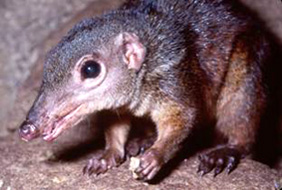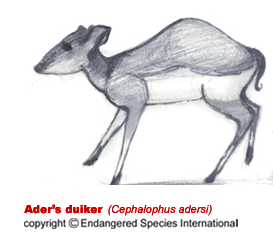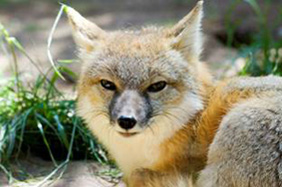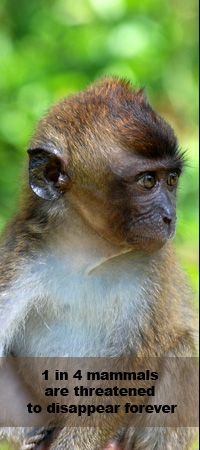|
Due to their high surface area to mass ratio small young mammals lose heat fast and have trouble maintaining high body temperature. Milk serves as a rich and concentrated food source in order for young mammals to keep warm and grow. Scientists have long been puzzled how such an intricate process, involving radical innovation in both mother and suckling young could come into being.
It is thought that 220 million years ago proto-mammals (synapsids) probably laid relatively soft-shelled eggs very similar to those laid by many reptiles and other species. However, a soft-shelled egg would be vulnerable to various bacterial or fungal infections and dessication that could result in damage of the developing embryo. The synapsids appeared to have solved vulnerability to infection and dessication by coating their eggs with some sort of anti-microbial fluid secreted from specialized skin glands during incubation. These specialized skin glands would then evolve into mammary glands as we know them today.
Before a mammal is born, the uterus provides a protected, sterile, moist, and warm environment where the fetus receives all necessary nutrients, oxygen, minerals and developmental factors that necessary to grow and develop. However, at birth, a mammal is very susceptible to a potentially cold and dry environment and to many potentially harmful organisms, such as disease-causing microorganisms to large carnivorous predators in the wild. Milk is, therefore, critical for the survival, proper development, and rapid growth of the newly born mammal. It is the only source of the water, organic nutrients, and minerals and has a high caloric value and generally is balanced for the nutrient needs of the developing young of that mammals species. Colostrum (the first milk taken from the mammary gland) and mature milk also contain nonnutrient substances, including antibodies and bioactive factors.
Hair, middle ears with three bones, a single jaw bone, and lactation appear to be part of the solution for providing enough energy to maintain a homeothermic, endothermic lifestyle.
Another important step in mammal evolution contributing to a homeothermic, endothermic lifestyle was the diversification of the teeth resulting in the heterodont dentition (various teeth of an individual differ in form throughout the jaws), which today is one of the most important features of mammals. With the development of various teeth performing different functions, digestion and nutritient absorption enabled the early mammals to expand their diets and, thus, allowed them to expand into new ecological niches.
Heterodent dentition resulted in the massive adaptive radiation that began after the demise of the dinosaurs and continues today. Chewing the food enabled early mammals to get far more calories and therefore energy out of it to maintain ahomeothermic, endothermic lifestyle. If plant food is broken up before it is swallowed, more is immediately accessible to digestive enzymes so that digestion can proceed faster.
Continue on page 5
|
|

Tree shrews such as the large tree shrew (Tupaia tana) are small mammals native to the tropical forests of Southeast Asia © Paddy Ryan


The endangered swift fox (Vulpes velox) is only found in the Great
Plains of North America © Paddy Ryan
|









